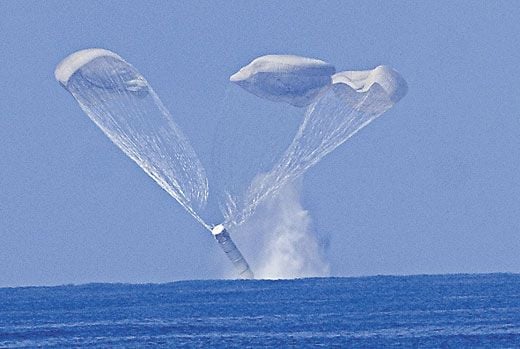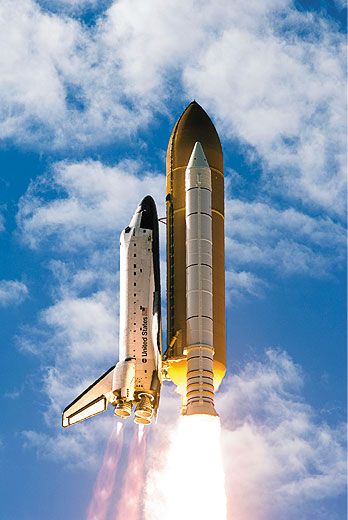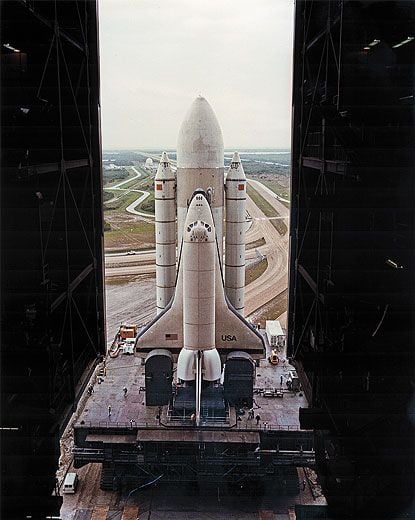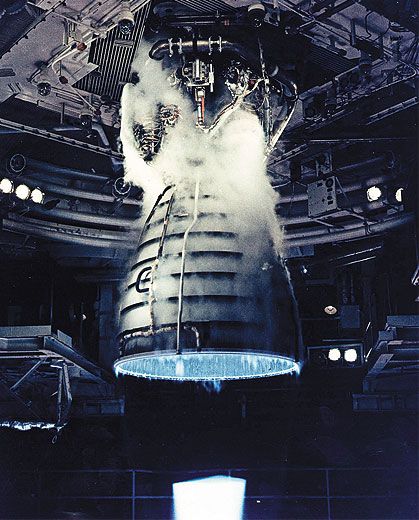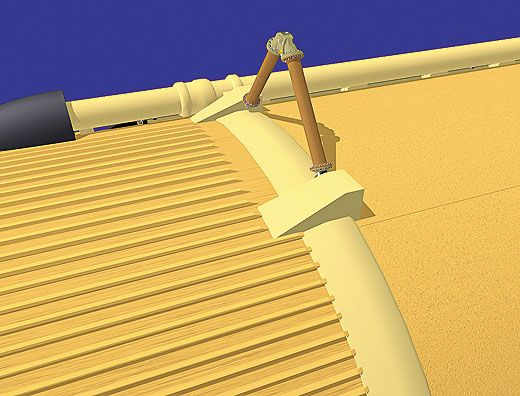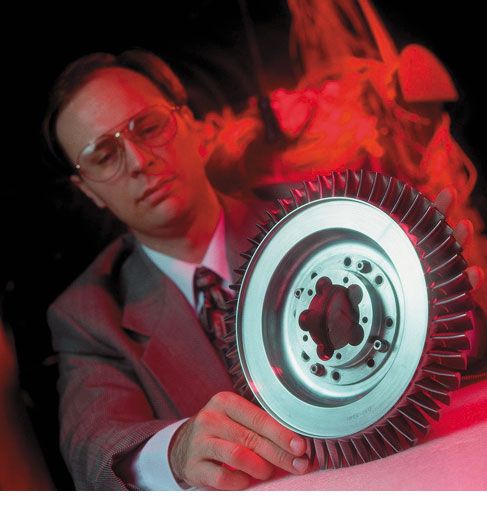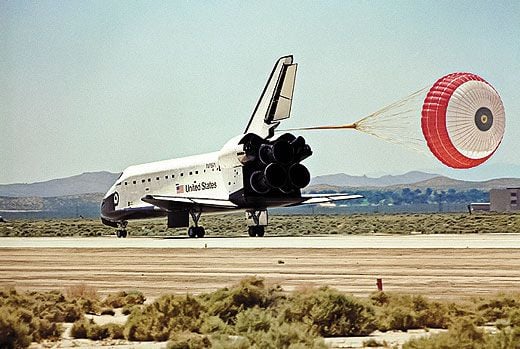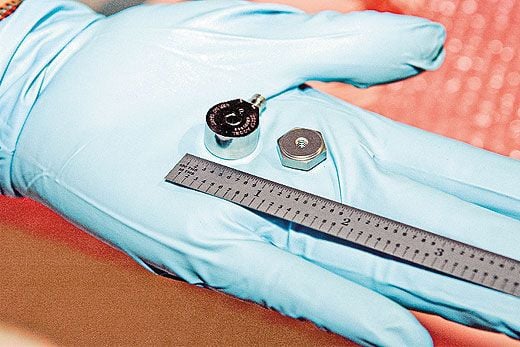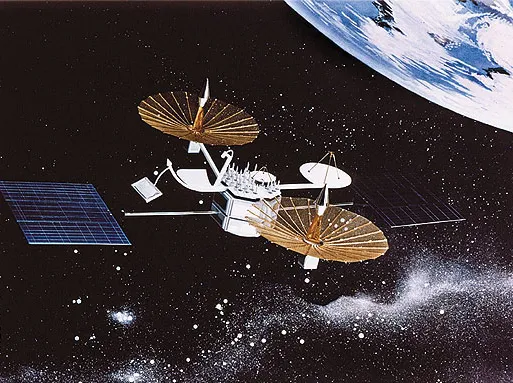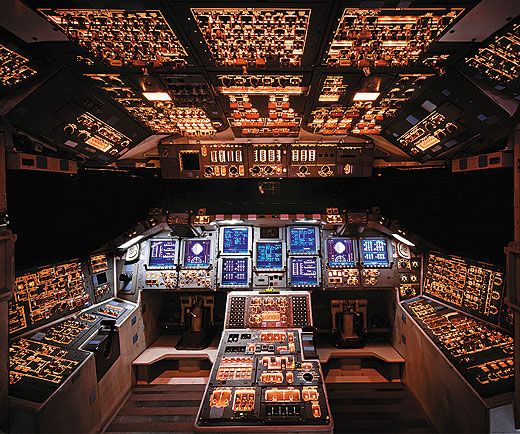Evolution of the Space Shuttle
How 30 years changed the world’s most complex flying machine.
/https://tf-cmsv2-smithsonianmag-media.s3.amazonaws.com/filer/Evolution_Space_FLASH.jpg)
The Space Shuttles's first flight, a two-day mission launched on April 12, 1981, with commander John Young and pilot Robert Crippen, was an announced test flight. So complicated was the shuttle system, it could be argued, that every mission since then has been a test. Over the years, NASA fine-tuned the system with modifications large and small. As the program’s end nears, the knowledge gained over 30 years will be flying on its 134th flight.
Reusable Solid Rocket Boosters
- After STS-5 (November 1982), the casing was made .002 to .004 inch thinner, reducing the weight of each booster by 4,000 pounds.
- After STS-7 (June 1983), engineers narrowed the booster’s throat and enlarged its nozzle. The changes increased thrust, enabling the shuttle to carry 3,000 more pounds of payload.
- During the days leading up to the launch of Challenger on STS-51-L (January 1986), freezing temperatures weakened an O-ring seal in a joint between two segments of the right booster. The weakness allowed hot gases to burn through the casing, causing the shuttle to break apart on ascent, which killed the seven-member crew. Two joints were redesigned with interlocking walls that had new bolts, pins, sensors, seals, and a third O-ring.
- In December 1994, parachutes (three per booster) were enlarged from 115 feet in diameter to 136 feet, slowing the jettisoned boosters’ descent, which reduced their damage at impact in the Atlantic Ocean. And to minimize damage during deployment, the chutes were packed in a circular, rather than zig-zag, pattern.
- Propellant grain was modified after 2003 to avoid cracks in the fuel when the boosters are stored horizontally at temperatures below 40 degrees Fahrenheit.
External Tank
- Before the loss of Columbia and its seven astronauts on STS-107 (January-February 2003), the base of the connection between the tank and the orbiter’s nose was insulated with ramp-like foam panels to prevent ice from forming (right, top). It was a piece of this foam that broke away during Columbia’s ascent and damaged the leading edge of the left wing, creating the condition that led to the destruction of the orbiter on reentry. On future flights, heaters replaced the foam panels.
- For the first two missions in 1981, the tank was painted white to protect its insulating foam from the sun’s ultraviolet rays while on the launch pad. Eliminating the paint allowed the shuttle to carry 600 more pounds of payload.
- Design changes, welding improvements, and the use of aluminum-lithium alloys have cut the tank’s weight. In 1981 and 1982, it weighed 77,100 pounds empty. STS-6 (April 1983) introduced a lighter tank: 66,800 pounds. With STS-91 (June 1998) came one even lighter: 57,470 pounds. The savings enabled the shuttle to carry increasingly heavier payloads.
- After STS-107, six cameras were added to six already on the shuttle system to monitor foam loss during ascent. They’re mounted on the boosters (three on each), on or in the orbiter (five), and on the tank (one).
Space Shuttle Main Engines
- In 1995, the power head was narrowed from a three-duct injector design to a two-duct one, and in 1998 the combustion chamber’s throat was enlarged. The changes reduced internal engine pressures and increased safety margins.
- To reduce friction from the oxidizer pump’s 23,000 revolutions per minute and the hydrogen fuel pump’s 34,800 rpm, silicon-nitride bearings were added to the two high-pressure turbo-pumps in 1995. In the oxidizer pump, the number of rotating elements was reduced from 50 to 28, while the number of bearings dropped from four to three. In the fuel pump, the rotating elements went from 30 to 14, and the bearings from five to two. The new oxidizer pump first flew on STS-70 (July 1995), while the new hydrogen fuel pump debuted on STS-104 (July 2001).
- Starting with STS-117 (June 2007), new onboard computers and sensors began providing better real-time monitoring of vibration loads in the turbopumps.
- High-precision casting during manufacturing has reduced the number of welds, cutting the number of engine inspections needed between flights.
Orbiter
- Starting with STS-49 (May 1992), orbiters used a drag chute on landing, which relieves wear on the brakes and reduces rollout distance by up to 2,000 feet.
- On the first four missions (1981-82), which each had only two astronauts, the shuttle had modified SR-71 Blackbird ejection seats. On STS-5, with a crew of four, the seats were disabled, and after STS-9 (November-December 1983), they were removed. Starting with return-to-flight STS-26 (September 1988), a telescoping slide-pole was installed to enable crew escape through the side hatch when the orbiter was below 30,000 feet and in a glide no faster than 230 mph.
- The original airlock was 150 cubic feet and located inside the mid-deck, with one hatch opening into the mid-deck and the other into the payload bay. In the early 1990s, the airlock was enlarged to 185 cubic feet and moved into the payload bay, with a third hatch at the top for docking with the Russian space station Mir (1995-98) and the International Space Station (starting with STS-88, December 1998).
- Beginning in 1995, crew seats were made with aluminum alloys, which cut their weight from 110 pounds to 49.
- After January 2003, the wing leading edges were fitted with 66 tiny sensors, each of which makes 20,000 readings per second to detect impacts. To protect against impacts, NASA hardened the tiles on wing leading edges and added reinforced carbon-carbon blankets under the nose.
- The shuttle has deployed six Tracking and Data Relay Satellites, beginning with STS-6 (April 1983). The satellites, along with three more sent up on Atlas IIA rockets, provide near-continuous communication during missions. Before TDRS, astronauts could talk to mission control only about 15 percent of the time while in orbit.
- A glass cockpit, with 11 flat panel color displays, replaced 32 dials and gauges starting with STS-101 (May 2000).
Shuttle Remote Manipulator System
- First used on STS-2 (November 1981), the 50-foot-long, Canadian-built arm was designed to deploy and retrieve payloads weighing up to 65,000 pounds. Work on the ISS, begun in the mid- 1990s, raised the requirement to 586,000 pounds, so the “wrist” got greater torque, enabling it to assist, if needed, in docking the shuttle to the station. The arm, however, was never used for that purpose.
- In 2000, all joints were refurbished, gear boxes and motor modules replaced, and, for better stability in space, asbestos brakes were swapped out in favor of ceramic ones.
- Starting with return-to-flight mission STS-114 (July 2005), NASA added a 50-foot extension to allow the crew to examine the shuttle’s belly for signs of foam impact damage.
Michael Klesius is an Air & Space associate editor.
